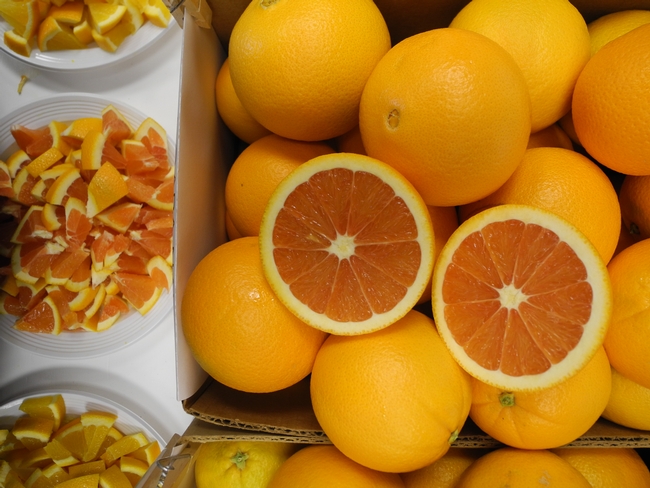A new study outlining the costs and returns of establishing and producing navel oranges with low-volume irrigation in the southern San Joaquin Valley has been released by UC Agriculture and Natural Resources, UC Cooperative Extension and the UC Davis Department of Agricultural and Resource Economics.
“A cost study gives a ‘new' grower a better idea of all the costs that are involved with producing the crop,” said co-author Greg Douhan, UC Cooperative Extension citrus advisor for Tulare and Fresno counties.
Real estate agents, land leasers, bankers evaluating loan applications and others can use the cost study to estimate current costs to plant and produce oranges and expected profits.
This study updates an earlier version, using as an example the Cara Cara navel, which is known for its distinctive pink-colored flesh rather than the conventional orange flesh of the Washington navel.
“The Cara Cara has been returning very good prices to growers for the past decade or so and is a relatively new navel,” said co-author Craig Kallsen, UC Cooperative Extension farm advisor in Kern County. “Of course, grower returns are driven by consumer demand. Why consumers like it so much I do not know, but I suspect it is because it tastes good and is different. You cut it and get a pink surprise. Its harvest maturity is similar to that of the Washington navel.”
The updated version takes into consideration “things like inflation, chemical availability, changes in markets both domestic and foreign, governmental regulations and other things,” Kallsen said.
The study is based on a hypothetical farm that consists of 65 contiguous acres onlandin the San Joaquin Valley previously planted to another tree crop. Establishment and production costs are based on 10 acres being planted to oranges. Mature orange trees are grown on 50 acres and the remaining five acres are roads, equipment, shop area and homestead. The grower owns and farms the orchards.
The two major orange varieties grown in the San Joaquin Valley are navels and valencias. Navels are grouped into three types by harvest timing – early, mid and late season. Due to current planting practices, only navels are included in this budget. Cara Cara is the variety of navel oranges currently most commonly planted.
The Cara Cara orange trees are planted double density, 10-by-20-foot spacing, at 218 trees per acre. At this density, it is possible to start harvesting in year 3 or 4. At year 8 or 9, full maturity is achieved and growers begin pruning back every other tree. This allows the grower to maintain yields while at the same time converting the field to 20-by-20 spacing – maximizing yield for a fully mature orchard.
For pest management, the study includes detailed information and links to UC Integrated Pest Management guidelines for citrus. The narrative contains tables of insecticide treatment cycles for establishment and production years.
The section “Exotic Pests of Economic Concern to Citrus Growers” contains information to meet quarantine regulations on exporting oranges from California to countries such as South Korea.
The authors describe the assumptions used to identify current costs for oranges establishment and production, material inputs, cash and non-cash overhead. A ranging analysis table shows profits over a range of prices and yields.
“2021 - Sample Costs to Establish an Orchard and Produce Oranges in the Southern San Joaquin Valley” can be downloaded for free from the UC Davis Department of Agricultural and Resource Economics website at coststudies.ucdavis.edu. Sample cost of production studies for many other commodities are also available for free on the website.
For additional information or an explanation of the calculations used in the studies, refer to the Assumptions section or contact Donald Stewart at (530) 752-4651, destewart@ucdavis.edu or Karen Jetter at (530) 792-8255 or jetter@ucanr.edu. To discuss this study with a UC Cooperative Extension farm advisor, contact your local UC Cooperative Extension office: http://ucanr.edu/County_Offices.
This study was funded in part by the National Institute of Food and Agriculture, U.S. Department of Agriculture, under award numbers 2017-70016-26755 and 2019-70016-29068.
